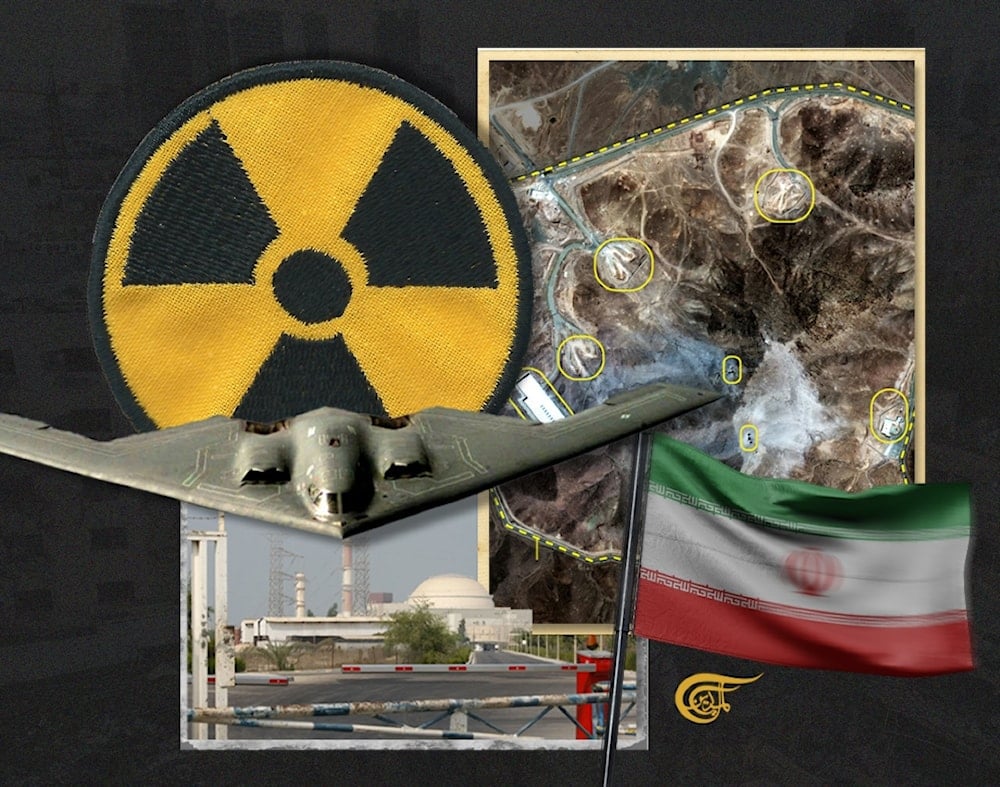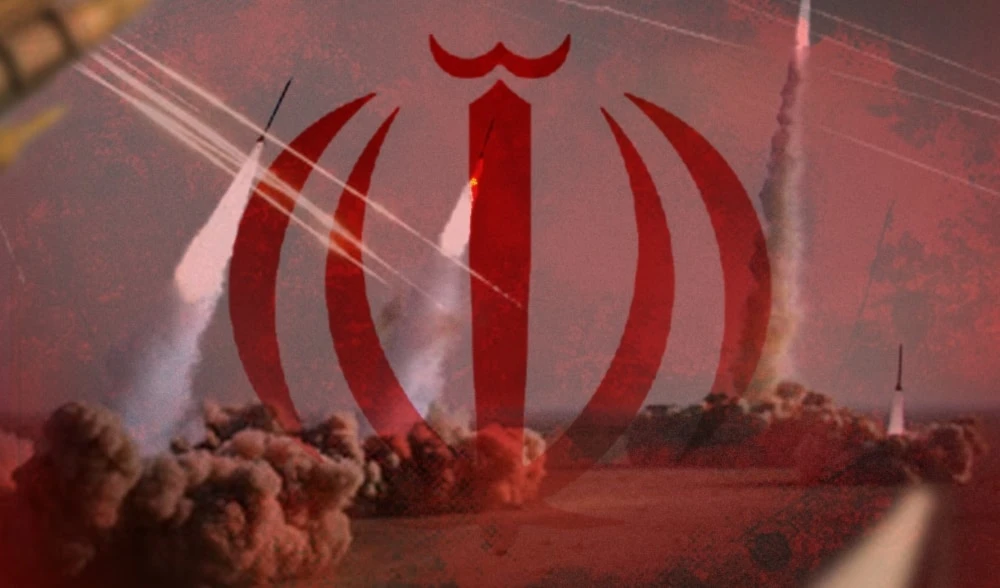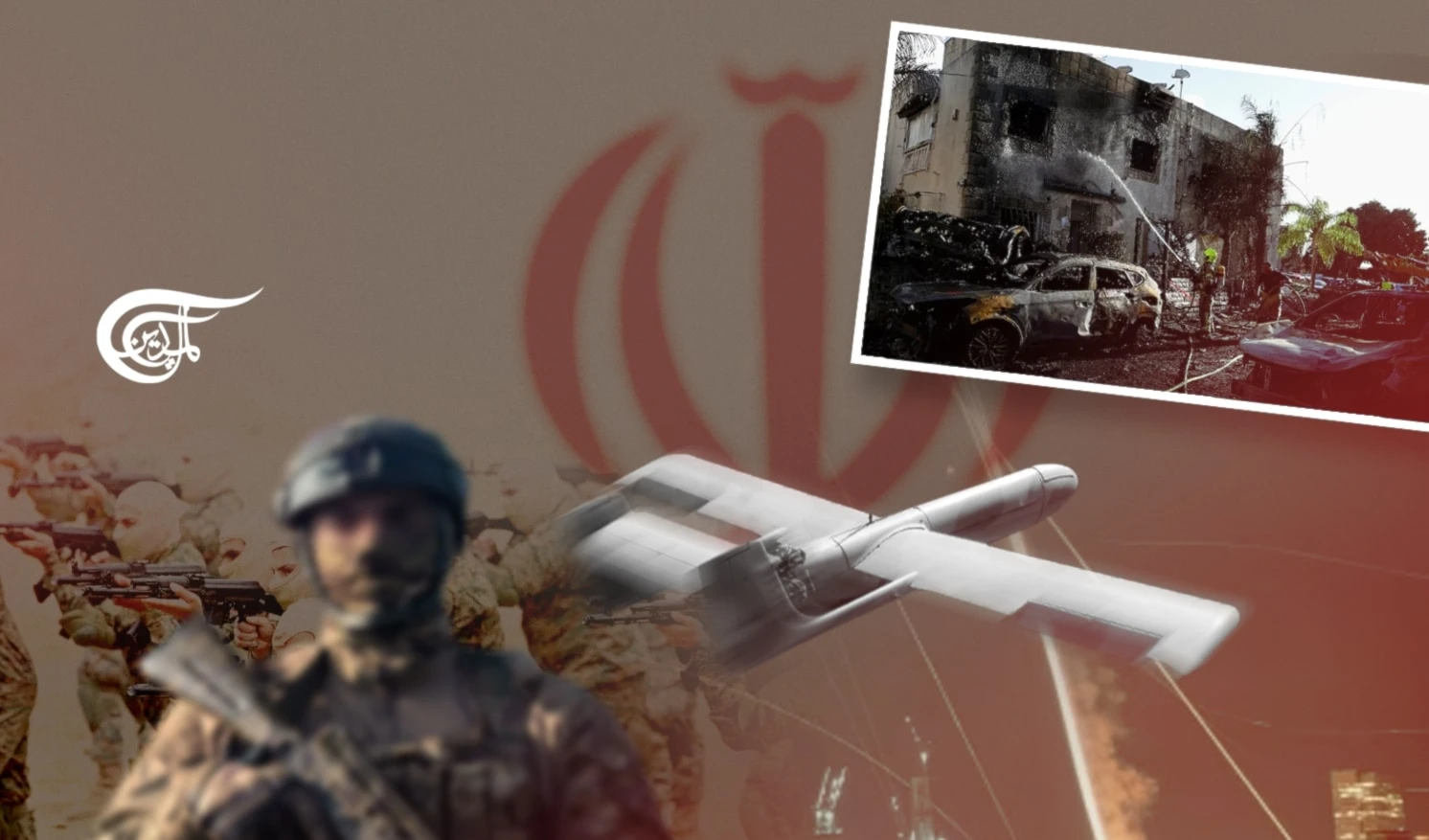Ceasefire without terms: Iran’s strategic deterrence in shadow of 9,379 kg
Amro Allan examines how Iran emerged from 12 days of war with its nuclear program intact, forcing a ceasefire without concessions, an act of strategic defiance that redefined the deterrence established against "Israel" and the US.
-

For now, Tehran waits in silence, but it waits on its own terms. (Al Mayadeen English; Illustrated by Zeinab el-Hajj)
12 days of war between Iran and the Israeli-US alliance have ended, not with an agreement, treaty, or even mutual understanding, but with silence. US President Donald Trump announced a unilateral ceasefire following an Israeli request, and after consultation with Prime Minister Benjamin Netanyahu's cabinet. Qatar, acting as an intermediary, passed on the message to Tehran, which acknowledged the mediation without committing to any terms. No documents were signed, no concessions were made, and no conditions agreed. What has emerged is a calm devoid of consensus, a tactical pause, not an end to the war.
Yet for all its fragility, this ceasefire reveals something critical: Iran endured, Iran responded, and most significantly, Iran preserved what it considers the cornerstone of its strategic deterrence, its nuclear capability and its sovereignty in the face of overwhelming pressure. And for a nation that has lived through decades of sanctions, threats, and assassinations, survival on its own terms is not defeat, it is a form of victory.
Victory without capitulation
From Tel Aviv and Washington, the war was framed as a swift punitive campaign meant to decapitate Iran’s nuclear programme and reassert Israeli regional dominance. Netanyahu boasted of air superiority, missile interception, and the assassination of key Iranian generals and nuclear scientists. He claimed "Israel" had “dismantled” Iran’s missile programme and brought its nuclear efforts to a halt.
But such triumphalism proved premature, and ultimately misleading. The final missiles fired before the ceasefire originated from Iranian launchers, employing a strategic class of weaponry deployed for the first time in this conflict. Strikes on Tel Aviv, Haifa, and strategic military targets pierced "Israel’s" multi-layered air defence systems and killed seven. These were not symbolic responses; they were calibrated strikes executed under pressure, revealing Tehran’s ability to absorb an attack and immediately retaliate.
From Iran’s perspective, the war did not end in surrender, nor even in compromise. Iranian officials confirmed that while key facilities at Fordow, Natanz, and Esfahan were targeted, critical material, including an estimated 9,379 kilograms of enriched uranium, was relocated to fortified and undisclosed sites before the first missiles struck. Iran suffered damage, but not disarmament. Its ability to resume nuclear enrichment, or even accelerate it, remains fully intact.
The untouched core: 9,379 kilograms
The most recent IAEA report from May 2025 offers the most telling figures: Iran holds 9,379 kilograms of enriched uranium at various purities. Of these, 8,840 kilograms are enriched to 5% or less, usable for civilian reactors and medical isotopes. A further 130 kilograms of uranium exists in intermediate purity levels, mostly in scrap form.
The strategic concern, and Tehran’s most potent leverage, lies in the 408.6 kilograms enriched to 60%, a step away from weapons-grade 90% enrichment. According to nuclear experts, this stockpile could provide material for up to nine nuclear warheads if further refined. Iranian officials assert that none of this material was compromised during the bombing campaign and that their pre-emptive relocations prevented a nuclear or environmental catastrophe.
The IAEA has acknowledged that it detected no abnormal radiation levels post-strikes, suggesting no containment breach occurred. However, the Agency has not been granted access to the new locations, a move Tehran justifies as a response to what it sees as an illegitimate and unprovoked military assault on safeguarded civilian nuclear infrastructure.
In this light, Iran's refusal to disclose further details is not simply about secrecy: it is an assertion of sovereignty. It underscores a consistent Iranian position that nuclear development, so long as it remains within NPT guidelines, is a right, not a bargaining chip.
Strategic deterrence and battlefield lessons
Iran's response went beyond merely absorbing damage. It turned the battlefield into a proving ground for its missile, drone, and cyber capabilities. Iranian forces launched hypersonic missiles that bypassed Israeli defences entirely, signalling not just tactical innovation but strategic maturity. It demonstrated that its command-and-control structures remain functional under attack, and that its military doctrine has evolved to anticipate multi-domain warfare.
Equally important is the shift in psychological warfare. For the first time, Iran shattered the long-standing regional norm against directly striking Israeli territory with sustained, high-precision attacks. It was a message: the Islamic Republic is prepared to escalate if pushed, and escalation no longer means allies in Lebanon or Iraq—it means Tehran itself.
"Israel's" sense of impunity has been challenged. Its air defense failures in intercepting Iranian salvos have exposed critical vulnerabilities, undermining Netanyahu’s claims of “total superiority.” What once was an asymmetric confrontation tilted in "Israel’s" favour has now grown more balanced. Iran may not match "Israel's" military hardware or American support, but it has altered the rules of engagement and redefined the costs of war.
A Ceasefire or a Countdown?
Like most previous regional confrontations, this ceasefire was not a culmination, it was an intermission. There is no written document, no internationally recognised monitoring framework, and no agreed roadmap for de-escalation. From Tehran’s point of view, this suits "Israel" and the US, both of which sought a pause, not a solution.
US President Trump’s ceasefire announcement was timed more for electoral optics than for strategic clarity. It postponed a war that risked spiralling out of control, particularly if the United States was drawn deeper into an open-ended campaign. But in doing so, it handed Iran space: space to harden its facilities, mobilise internally, and potentially accelerate a shift from nuclear ambiguity to overt deterrence.
And while Washington may consider this a temporary win, in Tehran, it’s viewed as proof that Iran’s endurance forced a nuclear superpower to back down.
Tehran has since filed a complaint with the United Nations, accusing the US and "Israel" of violating international law by targeting nuclear facilities under IAEA safeguards. Article II of the UN Charter prohibits the use of force against the territorial integrity of sovereign states outside of self-defence or Security Council approval. Moreover, under the Convention on the Physical Protection of Nuclear Material, attacks on safeguarded nuclear sites are explicitly prohibited due to the danger of radiological release and nuclear proliferation.
By failing to condemn the assault, Iran argues, the IAEA and its Director General, Rafael Grossi, risk setting a precedent that undermines the entire non-proliferation regime. The silence from international bodies has also eroded confidence in future cooperation and inspections. Why, Iranian officials ask, should Tehran continue to allow oversight if that oversight brings no protection?
The Unravelling of the JCPOA framework
With the Joint Comprehensive Plan of Action (JCPOA) already hanging by a thread since the US withdrawal in 2018, this latest episode may have finally sealed its fate. While Europe and Russia have called for renewed diplomacy, the military strikes have made a return to the previous deal politically toxic in Iran.
For many in Tehran, the JCPOA is now seen as a trap, one that offered transparency in exchange for economic relief that never came, and which left Iran’s strategic sites vulnerable to airstrikes and sabotage. In this view, returning to negotiations without structural guarantees would be naïve.
Indeed, many voices in Iran’s political establishment are calling for full withdrawal from the Non-Proliferation Treaty (NPT) itself, a move that would legally unbind Iran from its current commitments and allow for open pursuit of a nuclear deterrent.
A shift toward strategic ambiguity
The consequences of the ceasefire extend far beyond Iran’s borders. In Arab capitals, there is quiet recognition that Iran has emerged more resilient and emboldened. In Tel Aviv, there is growing unease over the efficacy of existing defences. And in Washington, there is a dangerous temptation to view ambiguity as strategy.
But ambiguity, in this case, cuts both ways. Iran has preserved its right to develop nuclear technology while refusing to confirm its future intentions. Should it now cross the weaponisation threshold, it may do so without warning, rendering international diplomacy too slow to stop it. The 9,379 kilograms of enriched uranium now sit in the shadows, untouched, uninspected, and more symbolically potent than ever.
If the goal of the Israeli-American air campaign was to slow down Iran’s march toward nuclear capacity, it may have done the opposite. Tehran now has every justification to argue that deterrence, not diplomacy, is its only protection against existential threats.
The reality is stark: this ceasefire has changed nothing. It has only delayed the inevitable confrontation, whether on the battlefield or in the nuclear sphere. "Israel" will continue to press for economic isolation and sabotage operations. Iran will deepen its alliances, harden its defences, and invest in further nuclear and missile development.
In truth, both parties are positioning themselves for the next phase of confrontation.
The international community, meanwhile, remains largely paralysed. With diplomacy broken, legal frameworks ignored, and verification mechanisms sidelined, the world is flying blind. The stakes are no longer theoretical. A single miscalculation could trigger a chain reaction that extends far beyond the Middle East.
The rendezvous has only been postponed
What began as an undeclared war has concluded with an undeclared pause. Yet make no mistake, this is merely the beginning of a countdown.
Iran, having absorbed an extensive assault on its territory, has emerged defiant, intact, and strategically alert. "Israel", despite its claims, has discovered its limits. And the US, though instrumental in halting the war, has revealed the fragility of its credibility as an honest broker.
The next act may begin with an enrichment announcement, a nuclear test, or another missile barrage. For now, Tehran waits in silence, but it waits on its own terms. The world, meanwhile, must decide whether to engage that silence diplomatically, or face its consequences militarily.
Either way, the rendezvous is coming.

 Amro Allan
Amro Allan
 9 Min Read
9 Min Read











